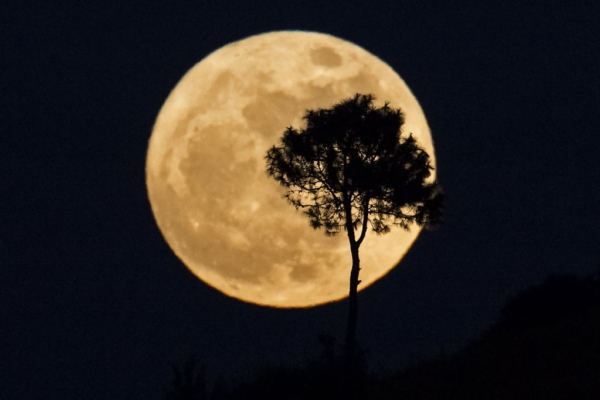On Monday, October 14th, Santiago STEAM Magnet School in Lake Forest, Southern California, held a planting event for a “Moon Tree.” A group of children dressed in space suits and star-patterned t-shirts cheered and applauded as they planted a sapling of a giant sequoia on the school campus. The seed of this sapling had circled the moon on the Artemis I Mission in space aboard a rocket launched by NASA in 2022.
The sapling of the “Moon Tree” was carried out on a small cart on Monday. Several students used shovels to dig a small hole, preparing a new “home” for the sapling at Santiago STEAM Magnet School. The tree was planted in an outdoor garden themed around space, adorned with colorful stones painted by the students. The Parent-Teacher Association enlisted community volunteers to help care for the sapling. Santiago STEAM Magnet School is one of the schools selected by NASA to receive a “Moon Tree sapling,” with around 500 K-12 students enrolled.
Sixth-grade student Emily Aguesse, who participated in the activity, said, “I have always dreamed of going to space, and this experience further motivates me to pursue that dream.”
This is NASA’s second time sending seeds into space to bring back to Earth for planting.
In 1971, astronaut Stuart Allen Roosa, a former smokejumper with the U.S. Forest Service, carried 500 seeds of various trees, including Sequoia, Sycamore, Sweetgum, Redwood, and Douglas fir, on the Apollo 14 mission. These seeds were orbited around the moon and distributed nationwide to be cultivated into NASA’s first generation of “Moon Trees.”
Subsequently, NASA conducted a second mission in 2022, again sending seeds into space via a rocket orbiting the moon.
In 2022, NASA collaborated with the U.S. Forest Service to send nearly 2,000 seeds from five tree species into space through the Artemis I Mission. The unmanned Orion spacecraft orbited the moon for about four weeks without landing on the lunar surface. After returning to Earth, these seeds were nurtured into young specimens of American sycamore, sugar maple, Douglas fir, loblolly pine, and giant sequoia saplings, and the public was invited to apply for their cultivation.
Paul Propster, Chief Story Architect at NASA’s Jet Propulsion Laboratory, mentioned that while many saplings were distributed to national landmarks for commemoration, the latest batch of saplings from 2022 will be sent to schools and museums to promote education on science and environmental conservation, with the hope of inspiring the next generation of explorers in their enthusiasm for space and scientific research.
Propster stated that it is still unclear whether space travel will affect plant growth, and NASA is actively researching this issue.
NASA has already distributed nearly 150 saplings this year and plans to conduct another batch of distribution in the fall.

